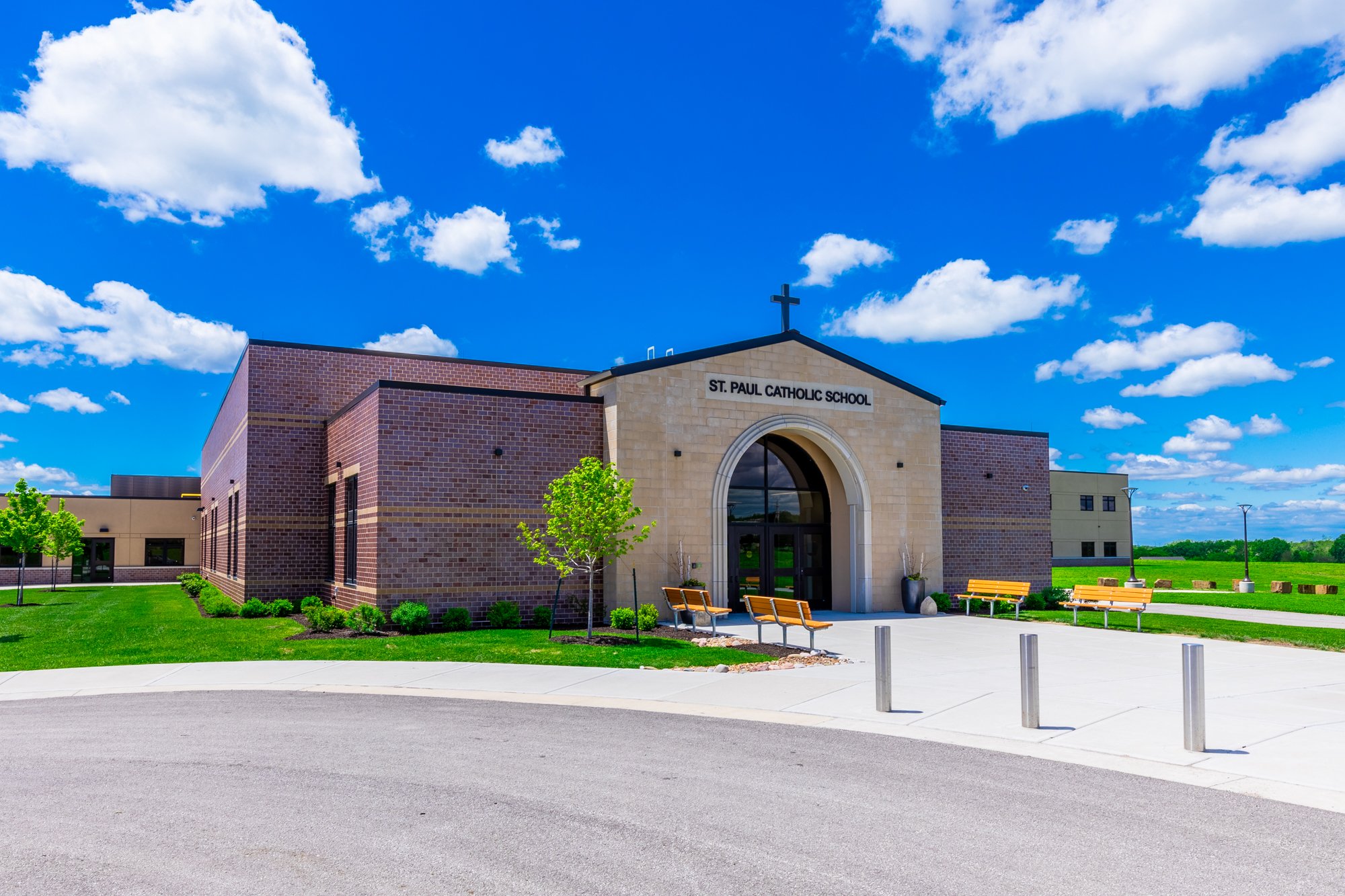
History
The Catholic Church in Eastern Kansas took root in the humble communities of Native Americans who were moved to this area in the 1820's. On February 2, 1860, the first recorded Mass was celebrated in the home of Olathe resident, Terence Cosgrove. Since 1851, Bishop John B. Miege, S.J., had been ministering to Catholics in the region, as well as in the areas now known as Nebraska, Colorado, and New Mexico. His see was located in St. Mary mission near present day St. Mary's, Kansas. Olathe Catholics continued to have Mass in homes until 1864 when plans were made to build a church. Olathe donated a lot for the church six blocks east and two blocks north of the public square. Farmers dug the foundation and hauled rock and timbers for a small church, 30 by 40 feet. On October 8, 1868, Father Alois Mayer celebrated the first Mass in the completed St. Paul's Church. The furniture was simple with an altar donated by a more prosperous parish and seats purchased secondhand from the Methodist-Episcopal Church.
In 1876, the bishop bought four lots at the southwest corner of Santa Fe and Chestnut streets for $400.00. The ground was to be used for a new, larger church. The first Holy Mass celebrated in the completed church was on the Feast of All Saints, November 1, 1884.
Saint Paul's families assembled in 1901 for the first Mass of Father Bernard S. Kelly, the first vocation to the priesthood from the parish. In 1907, Father Hugh Herron recognized the needs of the Kansas School for the Deaf, located in Olathe since 1886. His first objective was to learn sign language. Soon he was giving instructions to the deaf pupils and preaching to them in sign language each Sunday morning. In the fall of 1913, a parochial school was opened in a residence at the northwest corner of Santa Fe and Chestnut Streets. Classes were held in this location until Our Lady of Victory School was built on the west side of the church. The school was blessed by Bishop Ward of Leavenworth on February 6, 1916.
In 1950, Father Patrick Smith, looking forward to necessary future development and expansion, bought and gave to the parish a five-acre tract. Construction began on the site in 1959. The transfer of the school was made and the name was changed to "St. Paul's School."
Second Vatican Council opened in Rome in 1962. Significant changes in many aspects of parish worship and administration were implemented during the 1960's and 1970's. Mass in the United States could be now celebrated in English or Latin. The altar could now face the people. The order of the Mass invited all to share in a sign of peace. Lay people assisted the priest in reading some of the scriptures at Mass and in extraordinary circumstances, could help distribute the Eucharist. Parish and school councils were formed. Religious Education classes were formed and CYO created social programs for youth. Confession became known as Reconciliation. Many national social justice programs standardized the way the church looked after the material needs of the poor.
In 1963, construction began at 832 Larkspur on a convent for the nuns in residence at the Parish. It was known as the Fr. Hubbard Center.
The contract for the church was awarded in October of the same year. Soon thereafter, the rectory was built at 840 Larkspur.
Throughout the 1980's, St. Paul's community continued to serve God by reaching out to people of the parish and surrounding neighborhoods through Religious Education programs, marriage preparation groups, the Rite of Christian Initiation for Adults, and numerous community outreach programs.
St. Paul's Parish Activity Center (PAC) opened in 1993. The 152 by 80 foot addition to the school included a gymnasium, restrooms, meeting room, storage area, kitchen, religious education resource center, and the Knights of Columbus Hall. The PAC made it possible to host wedding receptions, athletic events, community gatherings, and parish activities to benefit the school and church.
In the late 1990's, the parish administration building at 900 Honeysuckle was dedicated. It included church offices, a board room, and a great room (known as The Fr. Alois Mayor Room) with kitchen. It facilitated gatherings with greater ease and the Hubbard Center was used to house the Priest In-Residence and the St. Paul Preschool.
St. Paul continues to grow today under the leadership of Father Michael Hermes. On Saturday, December 28, 2018, St. Paul Parishioners journeyed north to their new worship space within the newly built St. Paul School building at West 115th Terrace and South Lone Elm Road in Olathe. Plans to build the new church will commence following the completion of paying for the St. Paul School facility. With so much history, St. Paul is a pillar in the community and continues its mission of evangelizing and growing their respect for God and one another.